 |
||
|
||
| ||
Anadigm FPAA- an alternative to DSP? A new 6-in-1 chip for DVD players from Matsushita L7VTA: a new VIA KT400 board from ECS EPoX EP-4SDA5+ system board on SiS648 256 Mbit chips of graphics DDR SDRAM from Hynix Hyper Threading and new Intel logos Nikon Coolpix 4300: 4 Mpixels are better than 3 ATI MOBILITY RADEON 9000 officially released Casio Exilim EX-S2 and EX-M2 to replace EX-S1/M1 NVIDIA Detonator 40.41: express test results Anadigm FPAA- an alternative to DSP? Anadigm reported the shipments of AN220E04, the first field-programmable analog array (FPAA) chip, that can be dynamically configured for using in electronic control and management systems. The chip will be supplied with AnadigmDesigner 2 kit for AN220E04 software development.FPAA abbreviation was chosen, as the chip is the some kind of FPGA analog equivalent, enabling to implement complex processing and control functions into a volume-produced chip. AN220E04 belongs to Anadigmvortex family, consisting of configurable analog modules (CAM) programmable logics, designed for speeding up analog module development. AN220E04 is designed to replace discrete components of ASIC/ASSP devices in signal control, filtering, input signal processing of digital systems, autocorrection and other tasks, traditionally solved by analog modules in the industry car construction, medicine, communications, testing equipment and precision tools. Coupled with a DSP processor, AN220E04 can considerably improve the performance of a digital-analog system, and even replace DSP in some cases. Chips are packaged into 44-pib QFP, the price in over 10000 unit consignments is $15 per chip.
A new 6-in-1 chip for DVD players from Matsushita Matsushita Electric announced the release of the new single-chip MN2DS0002 solution for DVD/CD players. The new chip will be made using 6-layer 0.13-micron process technology with copper interconnects and will combine in itself the functionality, that previously required 6 chips.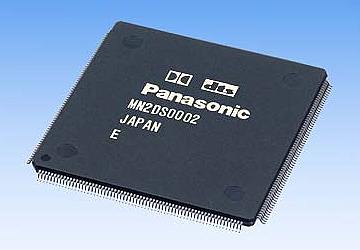 New Matsushita MN2DS0002 chip includes drive control, error correction, audio/video encoding, system control chip, video noise reduction, MP3 and WMA, and other circuits. Shipments are planned to start in the beginning of November. The aproximate price is 3000 yens (about $25).
L7VTA: a new VIA KT400 board from ECS Elitegroup officially presented L7VTA ATX motherboard, based on VIA KT400, showcased at Computex 2002. It´s designed for Socket A Athlon XP, Athlon and Duron processors supporting 200/266 MHz FSB.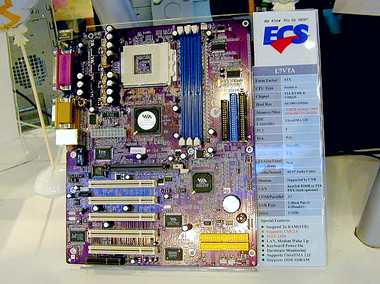 VIA KT400 Northbridge is coupled with VIA VT8235 Southbridge. The board has 3 DIMM slots (up to 3GB of DDR333 or up to 2GB DDR400), 5 PCI slots, AGP slot, CNR slot, 4 USB 2.0 ports, integrated AC97 codec. The company will also release a version with LAN, IDE RAID (RAID 0, 1) and IEEE 1394 controllers.
EPoX EP-4SDA5+ system board on SiS648 EPoX announced the release of the new EPoX EP-4SDA5+ motherboard for FSB 400/533 MHz Intel Pentium 4 processors, based on SiS648 + SiS963 chipset bundle.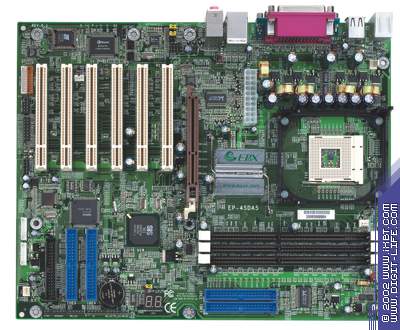 The board has 6 PCI slots, AGP 4È slot (AGP 8È supported), 3 DDR DIMM slots (up to 3 GB of PC2100, only DIMM1 and DIMM2 slots support PC2700), IEEE 1394 and USB 2.0, 10/100Mb Fast Ethernet (Realtek RTL8201BL), integrated IDE RAID (HPT372, Ultra DMA-133 IDE RAID 0, 1 and 0+1, two channels). EP-4SDA5+ supports overclocking via BIOS, Magic Health overclocking protection, hardware failures detection system with two LEDs.
256 Mbit chips of graphics DDR SDRAM from Hynix Hynix Semiconductor announced the release of 256 Mbit DDR SDRAM chips, designed for desktop, notebook and workstation graphics cards.New 256 Mbit DDR SDRAM chips operate with 32-bit bus (8M x 32 DDR). Their clock rate is 350 MHz, design — 144-pin FBGA package. Currently, the company is shipping samples. In the nearest future we should expect similar chips operating at 400 MHz.
Hyper Threading and new Intel logos For several days the Web had been bringing rumours that Intel decided to redesign logos of Pentium 4 CPUs and chipsets supporting Hyper Threading.Today our colleagues from French INpact-Hardware shared their information that, according to still undisclosed Intel documents, the company decided to use two orange skewed stripes with "H" and "T" letters on them for its Hyper-Threading-enabled products. Now there are Hyper-Threading chipset logos available. I guess new Pentium 4 logos are to follow shortly.
Source: INpact-Hardware
Nikon Coolpix 4300: 4 Mpixels are better than 3 Nikon announced the new 4-megapixel Coolpix 4300 digital camera. It bases on the year-ago Coolpix 885, featuring the similar design and main specifications, though differing by a 4-megapixel sensor instead of a 3-megapixel. In its turn, Coolpix 885 was based on Coolpix 880. Therefore, all accessories for previous cameras will be suitable for Coopix 4300.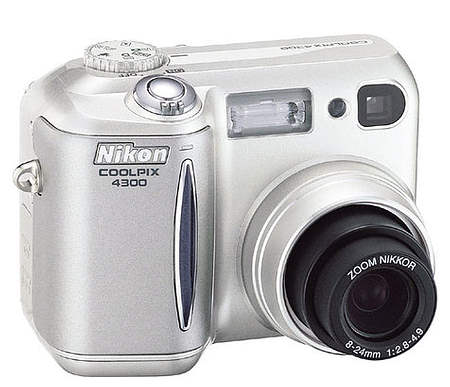 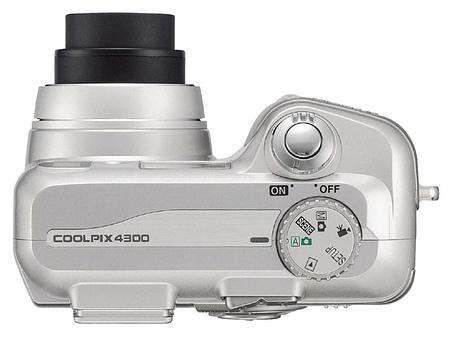 The camera will be available in silver and black variants. It will support the following accessories: Telephoto, Wideangle and Fisheye lens, Slide Copy Adapter (requiring UR-E4 adapter). Coopix 4300 will be supplied with a lens cover, shoulder strap, video cable, 16MB CompactFlash card, UC-E1 USB cable, Li-Ion battery, MH-53 charger and a Nikon View5 CD-ROM.
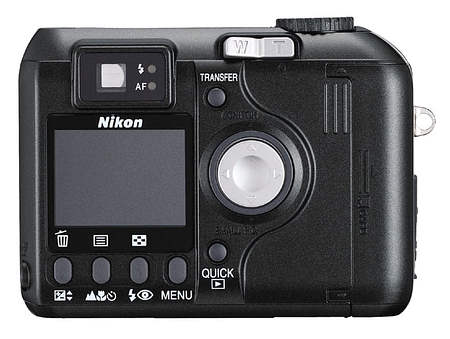 Camera main specifications:
ATI MOBILITY RADEON 9000 officially released ATI Technologies announced a mobile version of its Radeon 9000 GPU — MOBILITY RADEON 9000.Naturally, the new chip bases on RV250 core and has additional energy-saving circuits. As Mobility Radeon 9000 functionality is almost identical to the desktop version, you can read about it in our previous articles.
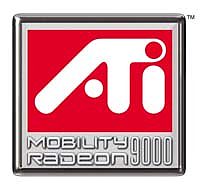 New Mobility Radeon 9000 will have two integrated variants: high-end Mobility Radeon 9000 S64 with 64MB DDR memory and 128-bit bus; low-end Mobility Radeon 9000 E32 with 32MB DDR memory and 64-bit bus.
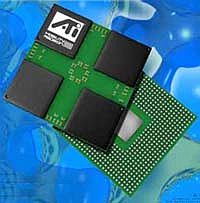 According to ATI representatives, Mobility Radeon 9000 S64 will become a good variant for light Banias notebooks.
 Besides, the company will release a discrete version of Mobility Radeon 9000 supporting 128-bit and 64-bit DDR memory bus. All new ATI Mobility Radeon 9000 GPUs will feature 31x31 mm BGA package, enabling for the pin-compatibility with previous-generation chips, including Mobility Radeon 7500. Maximum core clock rate of Mobility Radeon 9000 with integrated memory will be 250 MHz, memory clock rate — 230 MHz (460 MHz DDR); core/memory clock rates of a discrete Mobility Radeon 9000 will be 270 MHz / 270 MHz, respectively. According to ATI, shipments of Mobility Radeon 9000 notebooks will start the next week.
Casio Exilim EX-S2 and EX-M2 to replace EX-S1/M1 Less than in a half-year after CeBIT 2002, where Casio presented two miniature Exilim EX-S1 and EX-M1 digital cameras, it announced Exilim EX-S2 and EX-M2. They differ from their predecessors by 2-megapixel sensor instead of 1.3-megapixel CCD. EX-S2 and EX-M2 are expected for sale on September 28 for 40000 yens ($338) and 50000 yens ($423) and higher.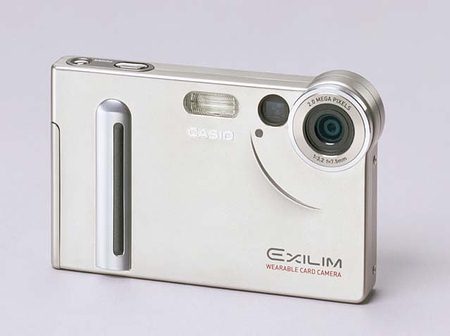 Both models feature 1/1.8-inch Hyper CCD-LENS, 2-megapixel matrix combined with lens. Camera lens provide F:3.2 aperture and 36 mm (35-mm equiv.) focal length. Minimal focusing distance is 1 meter. Supported resolutions: 1600x1200, 1280x960, 640x480. Cameras support ExifPrint and PIM II.
 Novelties have 1.6-inch TFT LCD display and optical viewfinder. Images are stored to SD/MMC cards and to 12MB of built-in flash memory. Shutter speed is 0.01 sec, maximum exposure is 0.9 sec.
 "í" model differs by íò3 playback functionality. Besides, EX-M2 enables to record video with sound, up to 30 sec at 320È240. At MP3 playback battery provides up to 5.5-hour operation. EX-S2 size is 88È11.3È55 mm, EX-M2 — 88È12.4È55 mm, weight is 88 and 91 g, respectively.
NVIDIA Detonator 40.41: express test results Yesterday NVIDIA announced the release of new NVIDIA Detonator 40 driver, promising good performance boosts to GeForce4 cards.Moreover, we can see the redesigned control panels, both Open GL, and D3D anisotropy control and many other improvements (see the company website for details). We present you the first test results from our videolab (GeForce4 Ti 4600; Pentium4 2.53 GHz, i850E, 512MB RDRAM PC1066):
Write a comment below. No registration needed!
|
Platform · Video · Multimedia · Mobile · Other || About us & Privacy policy · Twitter · Facebook Copyright © Byrds Research & Publishing, Ltd., 1997–2011. All rights reserved. | |||||||||||||||||||||||||||||||||||||||||||||||||||||||||||||||||||||||||||||||||||||||||||||||||||||||||||||||||||||||||||||||||||||||||||||||||||